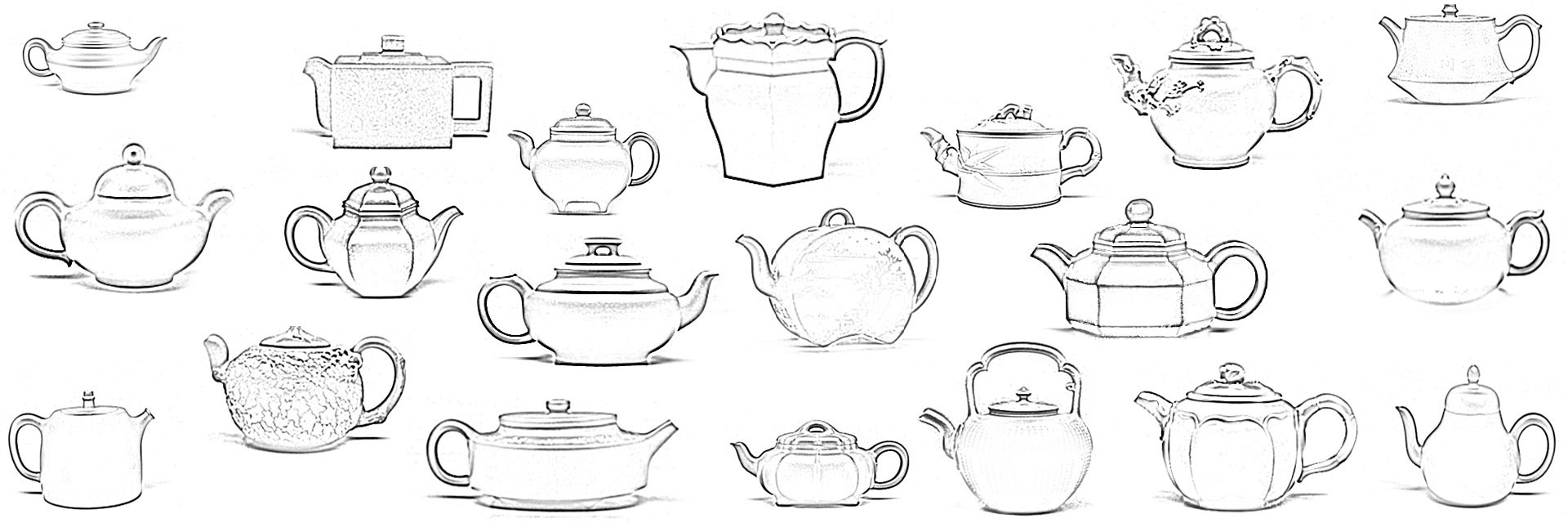In the previous two articles, we introduced twenty basic teapot shapes: Xi Shi Teapot, Shi Piao Teapot, Fang Gu Teapot, Jing Lan Teapot, Qin Quan Teapot, Long Dan Teapot, He Huan Teapot, Mei Ren Jian Teapot, Rong Tian Teapot, Pear Shaped Teapot, Duo Qiu Teapot, Shui Ping Teapot, Tang Yu Teapot, De Zhong Teapot, Pao Gua Teapot and etc. In this article, we will continue to introduce more teapot shapes.
Zhoupan Teapot – 周盘壶
Zhoupan teapot, based on the compass, is one of the common classic teapot shapes in 18 Types of Mansheng Zisha Clay Teapots, round and smooth yet sturdy. Zhou Pan coincides with the meaning of Tai Chi and broadens people’s perspective, opens up the mind, allowing people to remain steadfast amidst the storms of life, revealing the magnanimity of a wise individual.
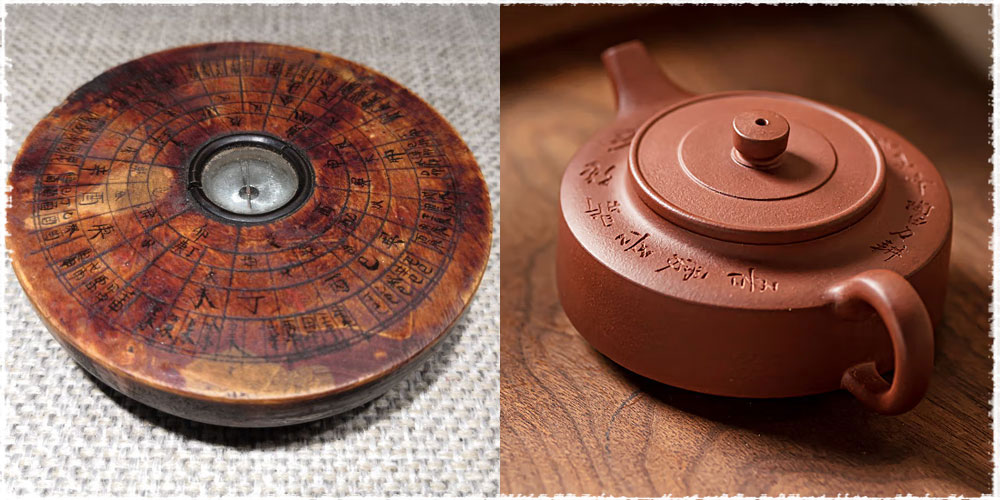

Siting Teapot – 思亭壶
Siting teapot appeared in the early Qing Dynasty, and it was created by Lu Siting, a famous Zisha master in the Qing Dynasty. The teapot’s body is shaped like a gourd ladle, with a thin curving mouth emerging from the abdomen upwards, a lovely handle, and a high empty cover that is tangent to the pot’s mouth, producing a full body. The curves on both sides of the teapot body flow down from the round knob at the top. The lid of the teapot extends outward, and the shoulder naturally bends inward. It spreads outward again as it approaches the belly, making a larger curve.
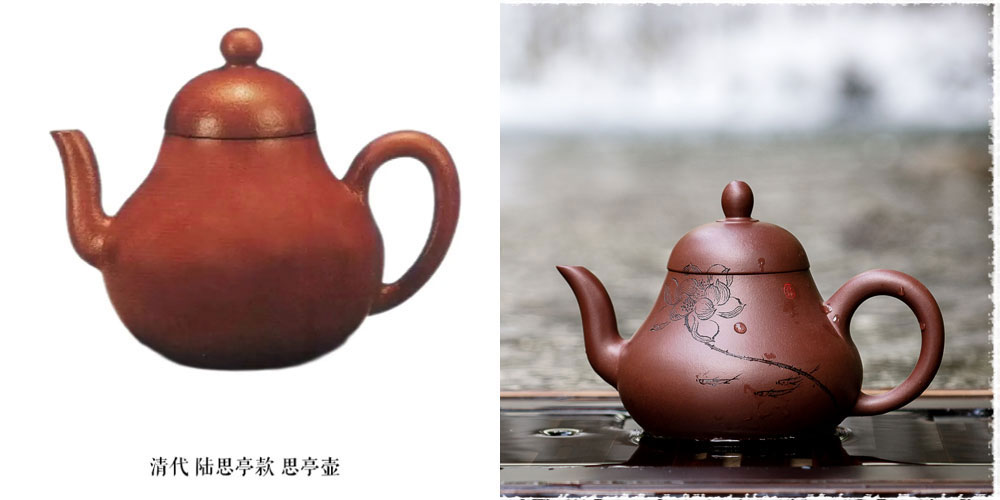

Shangxinqiao Teapot -上新桥壶
Shangxinqiao teapot is a classic teapot created by Gu Jingzhou for Mass Production in the 1960s, and has since become a generation of classics. The bridge-shaped knob on the lid resembles a small bridge in the rippling water, thus getting the name “Shangxinqiao Teapot”.
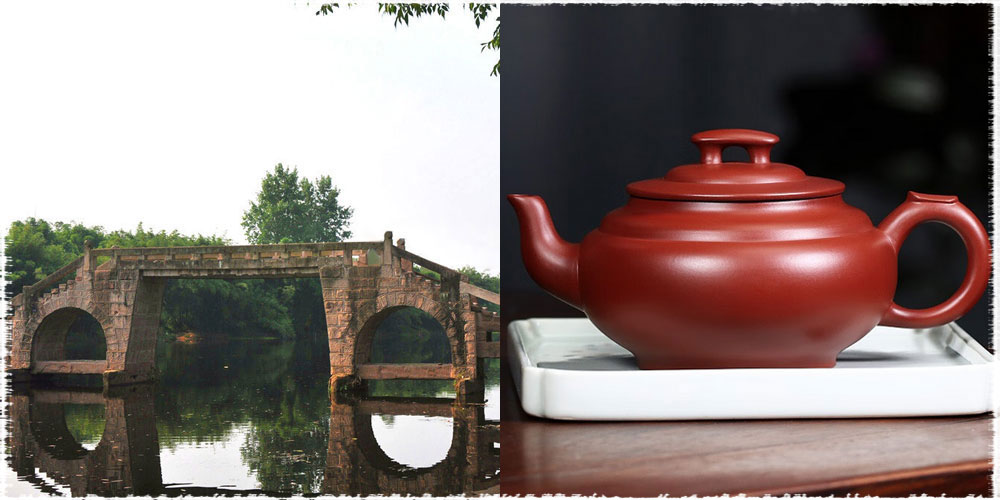

Dabin Ruyi Teapot – 大彬如意壶
Dabin Ruyi Teapot, created by Shi Dabin, a master of Zisha in the Ming Dynasty, is his classic masterpiece. Dabin Ruyi not only has the meaning of “事事如意, shì shì rú yì, May everything go well” but also the meaning of “鼎立, dǐng lì” with three legs supporting the body. The design is simple and elegant, and the body is plump and well-proportioned.
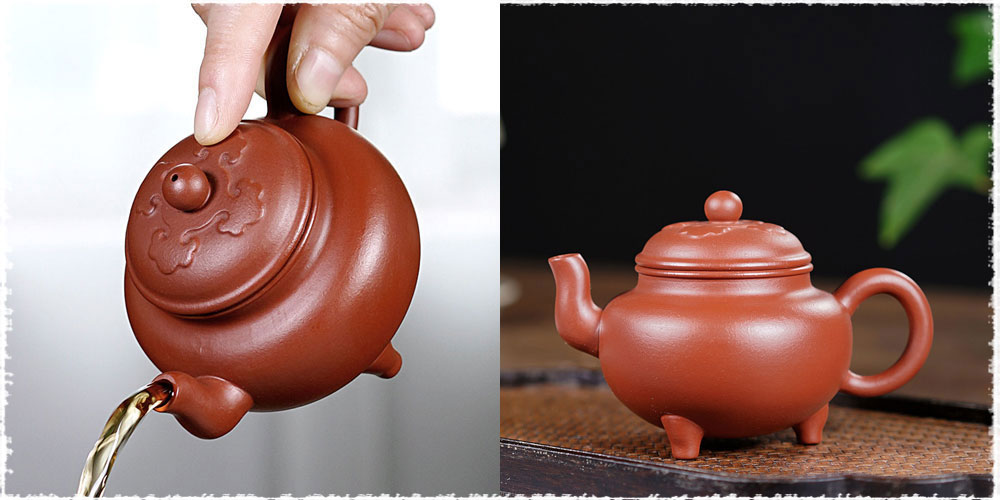

Gongchun teapot – 供春壶
Gongchun Teapot was originally called “树廮壶, shù yǐng hú, Shuying teapot”, but it was renamed “Gongchun Teapot” to commemorate Gongchun. Gongchun teapot was made by Gongchun, a famous pot maker in Yixing, Jiangsu Province, during the Jiajing period of Zhengde in the Ming Dynasty. He is the first Zisha artist in history and is well-known for his Zisha teapots. Gongchun was a book boy who accompanies his master Wu Yishan to study in Jinsha Temple. Then he learnt how to how teapot from the mold monk in this temple. He created a Shuying teapot in the shape of the Galls of the big ginkgo tree next to the temple.
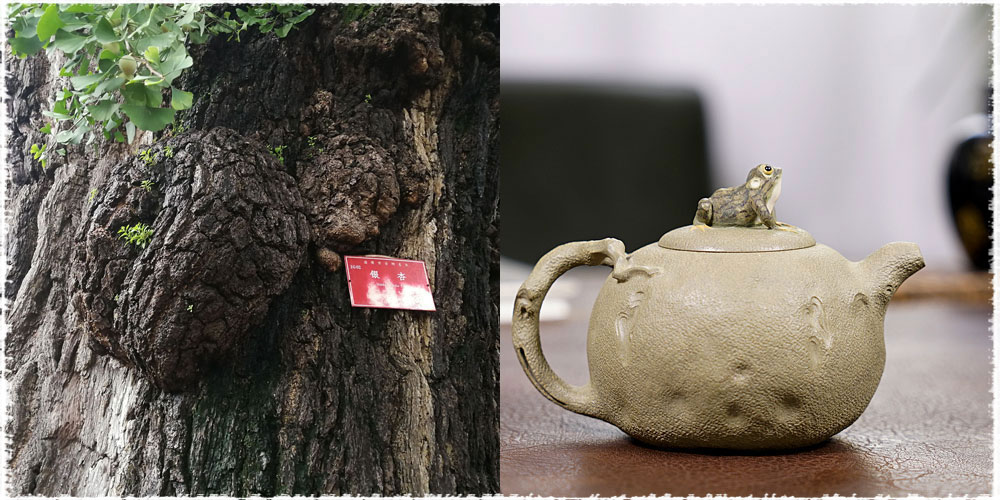

Sifang Teapot – 四方壶
Sifang Teapot refers to a teapot with a square-shaped body, resembling a four-sided geometric figure. The designs of Sifang Teapot exude a robust, vigorous, and erect masculine energy with accurate proportion, tight and flat mouth cover and neat lines.
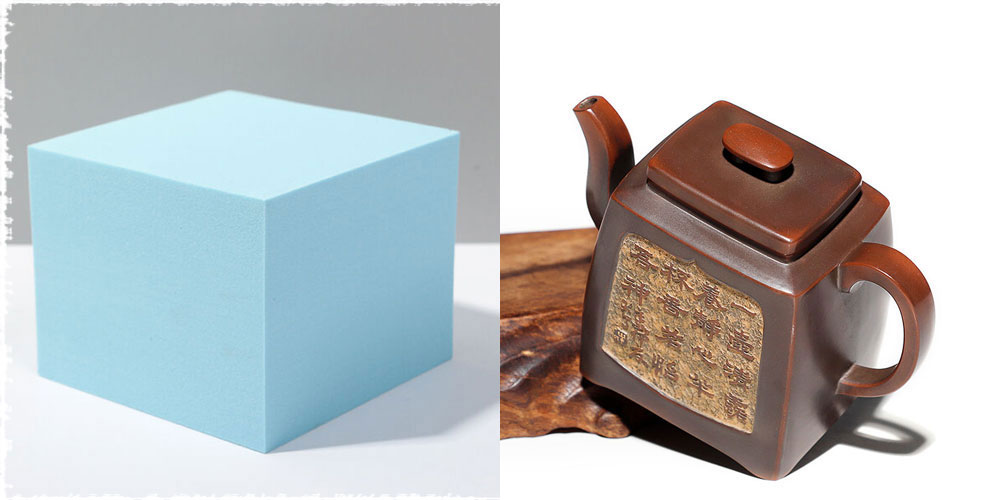

Liufang Teapot – 六方壶
Liufang teapot is also a classic square shaped teapot. It is also a pot shape based on geometric shapes. Its shape is bright and straight, with clear edges and corners that nicely create the geometric elegance of the square pot.


Zhuchu teapot – 柱础壶
Zhuchu teapot is also one of the common classic teapot shapes in 18 Types of Mansheng Zisha Clay Teapots. The shape is inspired by the “柱础 zhù chǔ”, the foundation stone used by ancient buildings to support large columns. It is consistent with the aesthetic pursuits of ancient literati, being stable and generous, reserved and controlled.


Handuo Teapot -汉铎壶
Handuo teapot is one of the classic teapot shapes, which is based on the ancient utensil Handuo. Handuo, hàn duó, is, the Duo of the Han Dynasty. Duo is an ancient musical instrument. The shape of the teapot is steady and cozy, and the lines are smooth and natural.
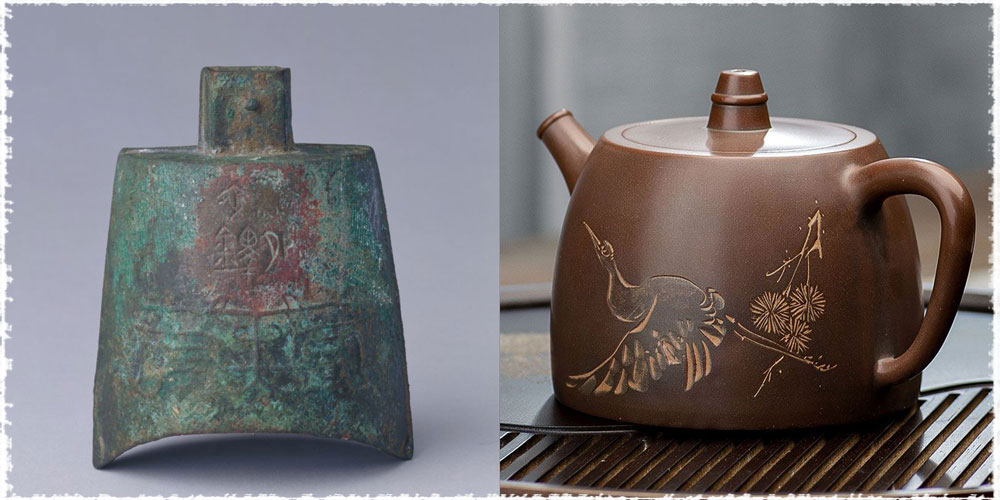

Tiliang Teapot – 提梁壶
The Tiliang Teapot refers to the pot with the beam handle, which began in the Northern Song Dynasty and was popular in the Ming and Qing Dynasties. It is a pot style earlier than the side-handle pot. The ancients drank tea by putting the teapot on the tea stove for cooking, so it is more convenient to use the Tiliang pot. The center of gravity of the beam handle and the pot body are on a vertical axis, which makes it easier to grasp and less likely to damage, but harder to pour.
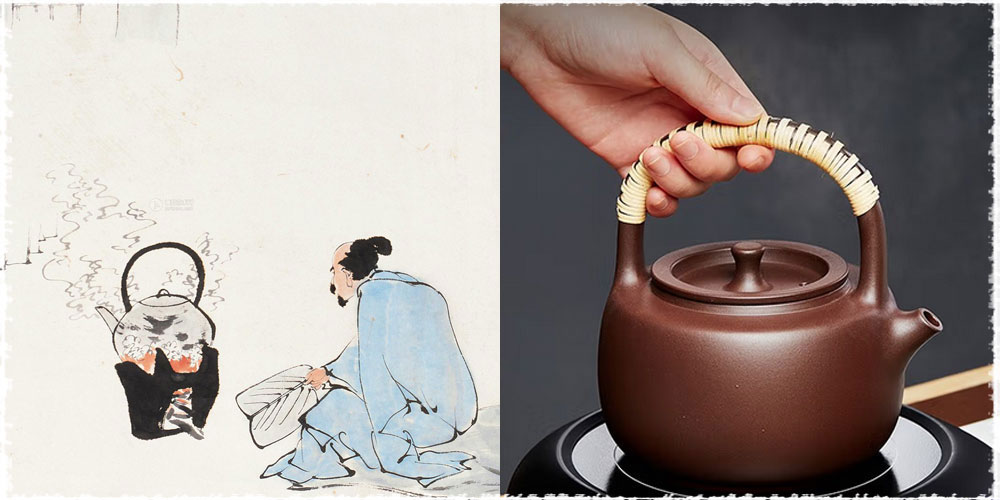

To Be Continued…
If you enjoyed this article, you might also like to read the following article:
An Introduction to Teapot Shapes Ⅰ
An Introduction to Teapot Shapes Ⅱ
A Brief Introduction to Four Famous Types of Potteries in China
How to Choose a Proper Yixing Teapot for a Single Type of Tea
Beware of teapot crack in winter
 Exploring the Charms of 2024 Spring Tea Garden with Angel
Exploring the Charms of 2024 Spring Tea Garden with Angel Yingde Black Tea
Yingde Black Tea Matcha vs. Green Tea Powder
Matcha vs. Green Tea Powder
